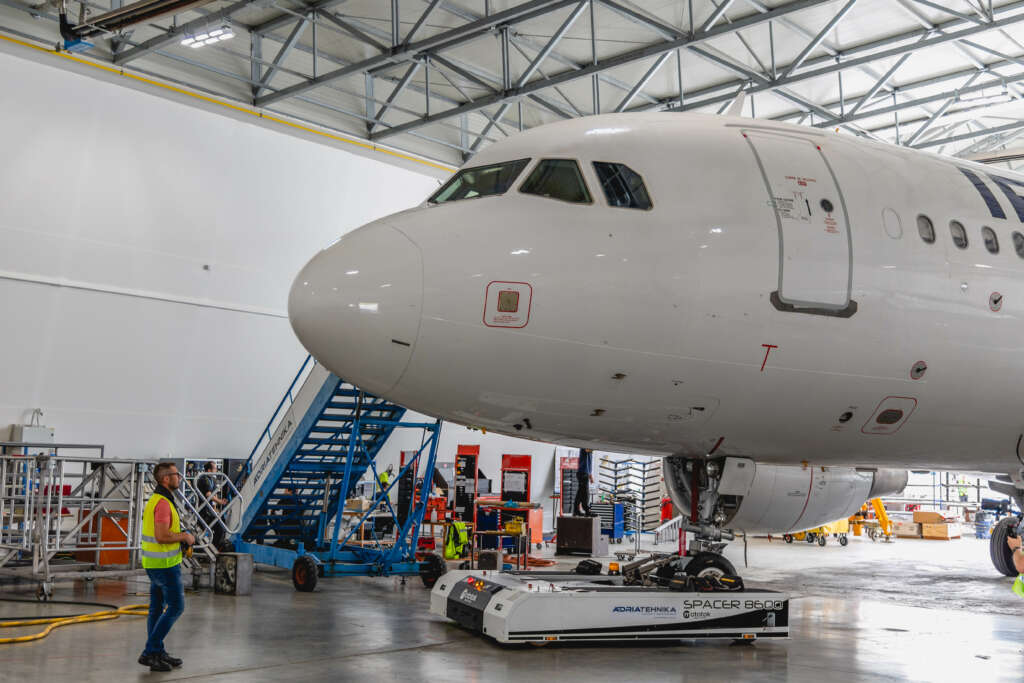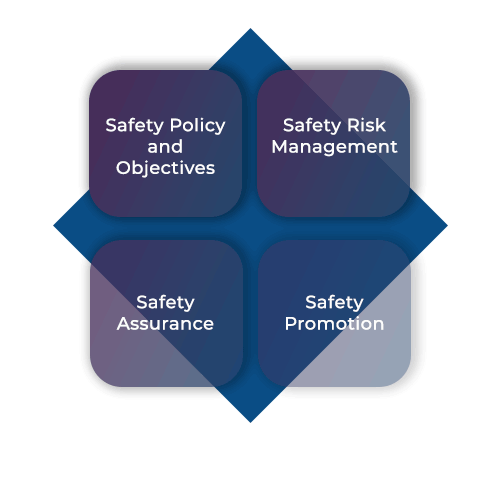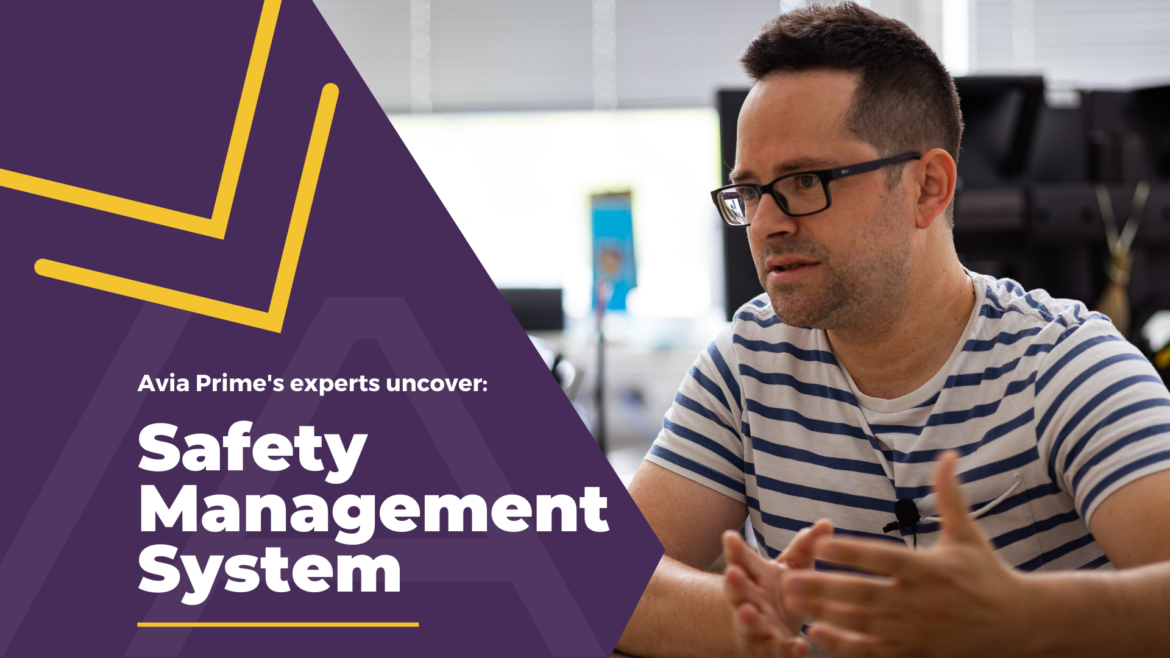The time has come, EASA has announced that since 02.12.2022 (plus 2 years of the transition phase for all closed findings) every MRO is required to implement the EASA Management System. This is a big challenge for all maintenance organizations, because it is a completely new thing, and even more, up until recently, there were no specific procedures & requirements or even a manual for that. Meanwhile, Adria Tehnika by Avia Prime, has already been working on it since 2019 and is fully prepared. We speak to Drejc Dobravec, Safety Manager at Adria Tehnika, who is responsible for implementing the SMS and training employees.
What is Safety Management System about?
The idea of SMS is to capture all the hazards and risks related to workplace and aircraft maintenance. Just like in the past with all-new mandatory requirements like Human Factors training, FOD awareness, and performance of the Competence assessments, the SMS has been making some waves from the start, then it all went calm and now it’s happening again. Every day, all the technicians and mechanics are faced with a lot of dangers, thanks to the SMS system, we will be able to respond to their concerns quickly, efficiently & proactive. In the past, we have solved these problems with an integrated quality/safety/security system. We have been waiting for SMS to become mandatory for the maintenance organization for years and in the light of the latest regulations, as of December 2nd, it will finally happen.

How will the SMS change the performance of the Quality department?
Once upon a time aviation faced a lot of problems regarding technology, equipment, etc., but through the years they raised the bar higher so they were more focused on human factor errors. As a part of the Quality department, we have already faced risks and hazards, but we dealt with them in a different way. Now, it is basically merging all together, so everything related to the quality site, human error, risk, hazard, etc. will be managed by one system – SMS. To look it at it from the other side, you could say that it’s an evolution of Human Factor training from the past. Actually, the Human Factor training is merging with Initial Safety Training to become one training. A number of events reports give us feedback, on how SMS works. So if our employees won’t write the initial event report, SMS will not work. As more reports we get, the better SMS could be.
Is the SMS anonymous?
Basically, anonymity is one of the options that you can choose during reporting an error or mistake. What is more, it is voluntary and confidential. SMS was created to prevent similar mistakes in the future. Quick correcting bugs will save our time, and thanks to that we can complete the maintenance of the aircraft on time without any delays. Therefore, we encourage our employees to report errors they made. This is the whole idea: to get more reports. Normally, at the time when some incident takes place, we look back and consider how much we paid for those mistakes. But because SMS is proactive we change this approach: let’s try to eliminate potential risks and hazards so there will not be any event in this nature or let’s assume that we reduce the number of those events. It shows that we have a strong culture.
Who is responsible for taking action in SMS?
Basically, the overall responsibility lies with the Safety Manager, who dedicates actions and risk owners to the responsible department manager for the solution. In the past, it was only the Quality / Safety and Security departments in Adria Tehnika, but now, due to the newest regulations implementing the SMS the safety and quality departments will basically merge within the Compliance department.
How can I submit a report?
We have a few ways for that. One of them is as follows: Adria Tehnika’s employees just bring us an initial prevention report to our office. The second one is post mail, so if we won’t be in the office, you can basically write the report and put it in the mailbox. And third is of course via email. At this moment we have an initial event report. This form is in a text file, so basically you can get it from the system, you have to print it out, fill in, scan it, attach the pictures and send it to our email. We are working to simplify the process in cooperation with the IT department. I want to create an easier way of reporting, like an active PDF available on every computer. So you just fill in the mandatory data, attached the pictures, click send and it’s done.
What are the most common reasons for reporting?
Major issues of course are based on human error. A lot of our employees make their own mistakes but the reasons for that are similar. It could be stress or time pressure. Especially on the final days of the check, our aircraft engineers inform us often, that they have to push for the finish line, and everything goes fast. This is the time when the most mistakes are made. Time pressure, lack of resources – when the number of licensed staff sometimes isn’t enough those are common reasons of mistakes. But I’m happy that we don’t have many cases providing a lack of knowledge. Of course, we noticed some cases but not that many. Equally infrequent are reports of the use of inappropriate equipment. The majority is based on time pressure.

How much time does it take to implement solutions in response to SMS notifications?
To determine whether the reported problem really exists and whether it has a negative impact on people and our operations, we need to perform a risk assessment. In order to reach a consensus, we need to confront different perspectives, so we nominate at least two independent persons with different views. In terms of SMS pillars, we have to analyze every aspect of the problem. Then, based on the risk score we are facing conclusions within the risk matrix.
The matrix consists of three fields as from now: green, yellow and red. Whenever we see red in the matrix, we are at a critical point. As a result, we treat the report as a priority and do everything we can to resolve it. If we’ll have the lighter case, we need to revise some procedures, and it takes longer. So, as you can see, time depends on the case. In the future risk matrix will expand to orange color & exposure limit also.
It may take about one day or two. But if there is a need to buy some equipment, then the time of resolving this instance is extended because the decision to purchase new equipment has to be made by management. In our experience, we had a case, which we solved in a few months. In every case we do immediate actions, to lower the risk, but let’s say for the final action could be up to months.
Could you mention the basic elements of SMS?
According to the ICAO SMS, we have Safety Policy & Objective, Safety Risk Management, Safety Assurance & Safety Promotion.

To explain really in a short way, Safety Policy & Objective is a statement that is signed by the person, who is responsible for Safety in the MRO – Accountable Manager, Risk Management deals with hazards & risks, assurance is basically overview of the safety, audits & inspection procedures in the hangar floor, while promotion of safety is describing the procedures that MRO has developed and described on how we are dealing in the was of communication to our staff, present them with new requirements, regulations, news…etc.
Why did you decide to implement SMS in Adria?
Until I came into quality department in 2014, all the time I heard: next year SMS is coming. I was constantly bombarded by this SMS system that will bring all the new procedures & requirements. I spent a lot of time on my own, researching & studying why is it so good, and what kind of benefits it will provide, how can we implement it, what does it take…etc. All of this questions, but so little answers were found.
We had a lot of time to prepare because EASA constantly moved the timeline, finally, they have designated: the 2nd of December, it’s mandatory.
We are so lucky, because in 2019 we started to prepare an SMS implementation plan. Our CAA approved our SMS manual, but the problem was that they didn’t have any materials about SMS for the Maintenance environment, just for the operators. Luckily we have been dealing with SMS for about two years so now we have a lot of statistics and we can prove, that system can provide a lot of benefits.
We are glad that we have gained some experience and, what is more, we already help with SMS to other companies – e.g. a few months ago, our CAA reached us for some help in this area.
It will be mandatory from the end of this year so we’ll be ready. If I’m not mistaken I think It is the first time in our history when we are ahead of the regulations.
So, do you provide the training in Adria Tehnika about SMS?
Yes, the initial Safety training was planned already more than a year ago, but because of Covid, we had to postpone it several times. But now we finally started and already we have 5 groups performed.
At the first, we started with employees from the offices, and when the peak season will end, we will provide training for all maintenance staff also. I hope that until September, maybe October, the start of next season, each employee at Adria Tehnika will be trained.
What about employees who are not permanently employed at Adria?
The contractors will be informed that at the end of the year they are mandatory to have this training. Our Part-147 organization will be also able to provide them with the SMS training, just like Human Factors in the past or Legislation & Company procedures or EWIS. So, if you are a contractor, you can perform training in-house.
Do you need to pass the exam of SMS?
Initial training usually doesn’t require passing the exam, but after two years, you will need to pass the could test. All MRO staff have to go through SMS training.

